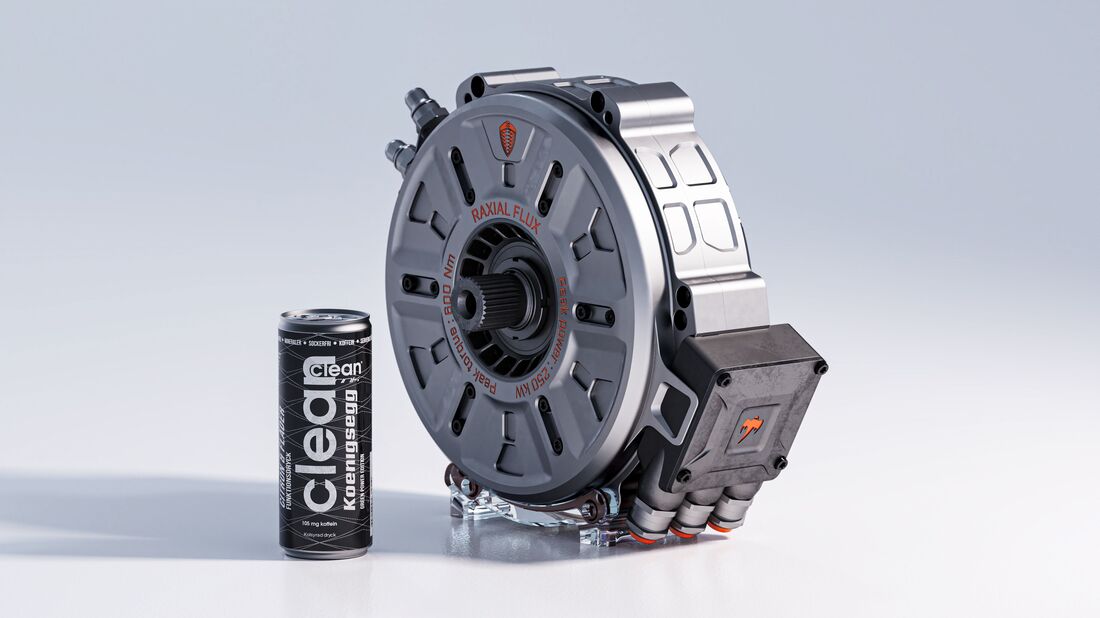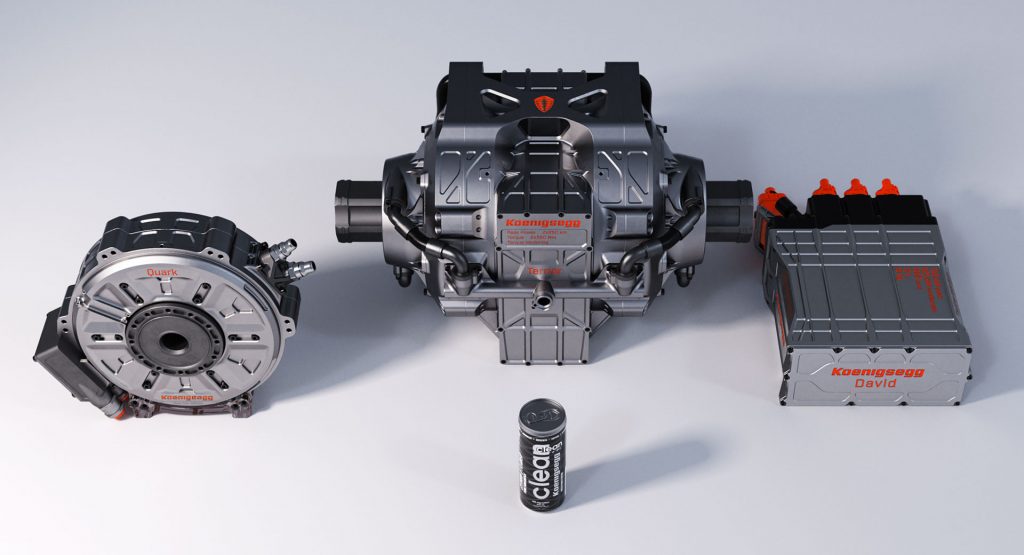KOENIGSEGGThe Quark, announced Monday, combines both radial- and axial-flux constructions to offer a good balance between power and torque. Rather than explain the difference between the two, I'll turn you towards this article from EV trade publication Charged. All you really need to know is that this is a best-of-both-worlds solution—Koenigsegg claims the Quark has an industry-leading torque-power-weight ratio. Those peak power and torque figures are only available for 20 seconds, which is common among EV motors. After 20 seconds, the figures drop to 134 hp and 184 lb-ft of torque. That's fine for the Gemera, which has three electric motors and a 600-hp three-cylinder.
"The Quark is designed to bolster the low-speed range of the Gemera, where you need it, for brutal acceleration," said Koengisegg electric-motor design lead Dragos-Mihai Postariu in a statement. "The ICE then focuses on the high-speed range. What this means in terms of performance for the Gemera is a big power surge followed by a continuous record-speed push to 400 km/h [248.5 mph] without any torque or power losses."
"The Quark is unique in its high efficiency in combination with its class-leading torque-to-power-to-rpm-to-weight matrix," said CEO Christian von Koenigsegg in a statement. "This means, when using the Quark in applications such as marine, aircraft or VTOL, there is no need for a step-down transmission, instead direct drive can be achieved, as the RPM of the motor is right from the get-go. Small high-revving motors can have higher peak power-to-weight ratio, but they need transmissions in most applications in order to get to the desired output rpm and torque, causing energy loss and adding weight and complexity to do the same job. So any benefit in size is lost."
More information on the Terrier unit is forthcoming, and presumably, it will be featured on future Koenigsegg products. As ever, the numbers are deeply impressive and entirely unsurprising from the innovative Swedish firm.



 RSS Feed
RSS Feed